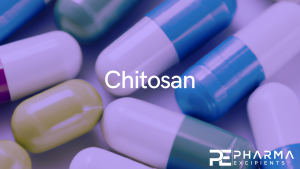Shifting from sustained to delayed drug delivery systems: Encapsulated mesoporous silica-chitosan grafted polylactic acid-based composite approach

The current study demonstrates a desired drug delivery-controlled system with a wide range of release parameters. It illustrates the feasibility of carriers in the systems for extended and short drug release. Herein, mesoporous silica nanoparticles (MSNs) coated with chitosan (Cs) grafted polylactic acid (PLA) composite were fabricated by a sol-gel method in the form of micrometric porous particles (∼270 nm) with ζ-potential of -17.7±1.7 mV and a specific surface area and total pore volume of 122700 cm2/g and 0.057 cm3/g, respectively.
Research Highlights
- Mesoporous silica-chitosan grafted PLA composite was synthesized by sol-gel method.
- Silica-Cs-g-PLA possess surface area and pore volume of 12.27 m2/g and 0.057 cm3/g.
- Adsorption capacity was 83.33 mg/g while encapsulation efficiency was 88%.
- An acidic medium was most favorable for drug loading and release kinetics.
- Doxorubicin release with silica-Cs-g-PLA composite was delayed up to 10 days.
The prepared template of polymer-silica composite pores proved to be essential in the incorporation of Doxorubicin (Dox) drug molecules with adsorption capacity of 83.33 mg/g and encapsulation efficiency of 88%. Dox was incorporated via the solvent diffusion method into the polymer-silica composites at suitable pH and concentration, resulting in solid drug dispersions. The silica-Cs-g-PLA composites showed greater effectiveness in the delayed release of the Dox with complete release after 10 days as compared to pristine MSNs and silica-Cs, which were completed after 12 h and 24 h, respectively.
The drug release profiles were studied at different pH (2, 7, and 8), with maximum results obtained at pH 2. Both pristine MSNs and silica-Cs suffered from the burst effect, which was overcome by the grafting of PLA. The functionalized silica-Cs with PLA shows a significant change in the drug release properties from a sustained release process for pristine MSNs and silica-Cs to an enhanced delayed process for the silica-Cs-g-PLA composite, which makes this composite attractive for oral multi-particulate formulations of modified release.
Read more here
Materials
Tetraethyl orthosilicate (TEOS), cetyltrimethylammonium bromide (CTAB), (3-aminopropyl) triethoxysilane (APTES), low molecular weight chitosan (CS), Mw < 104 g/mol, D.D 75 – 85%; N-hydroxysuccinimide (NHS); 1-ethyl-3-(3-dimethylaminopropyl)-carbodiimide hydrochloride (EDC), commercial grade, powder; N,N-diethylformamide 99% (DMF), doxorubicin hydrochloride (Dox) were supplied by Sigma-Aldrich. L-lactic acid (LA), 80% water solution, and Methane sulfonic acid (MSA) were purchased from Lachner.
Kateryna Filatova, Muhammad Yasir, Asabuwa Ngwabebhoh Fahanwi, Lenka Lovecká, Dušan Kimmer, Vladimír Sedlařík, Petr Sáha, Shifting from sustained to delayed drug delivery systems: Encapsulated mesoporous silica-chitosan grafted polylactic acid-based composite approach, Materials Chemistry and Physics, 2024, 129457, ISSN 0254-0584, https://doi.org/10.1016/j.matchemphys.2024.129457.
Read also our introduction article on Chitosan here:


